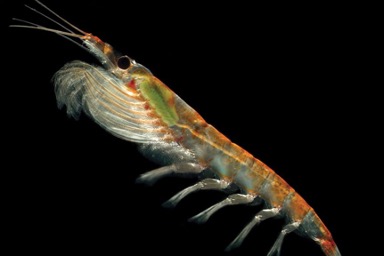Using whales to study Antarctica’s changing environment

Sponsored by

Sponsored by

Humpback whales across the Southern Hemisphere are being used as indicators of environmental and climatic change in Antarctica through Griffith University-led research.
The Humpback Whale Sentinel Program, headed by Associate Professor Susan Bengtson Nash from the Centre of Planetary Health and Food Security, uses whale health data, collected annually since 2008 from migrating whale populations across the Southern Hemisphere, to provide important clues about the status of the Antarctic sea ice ecosystem.
“Conducting research in Antarctica is extremely challenging due to the travel logistics, the expense, and now with the number of expeditioners kept to an absolute minimum due to COVID-19,” Associate Professor Bengtson Nash said.
“The Humpback Whale Sentinel Program, however, avoids all of these problems by collecting whale-blubber samples from humpback whales during their winter migration to breeding grounds in warmer waters.”
Using a modified dart to take tiny samples of whale skin and blubber from humpback whales in their breeding grounds in eastern and western Australia, Colombia, New Caledonia and Brazil, the team gets a snapshot of the health of the whale populations, specifically the accumulated fat stores and pollution burdens, diet, and the number of pregnant females.
“The sampling technique is well established and minimally invasive, and often likened to a mosquito bite for the whale, with the blubber tissue having few nerves,” Associate Professor Bengtson Nash said.
“The small samples we get can tell us a lot about the whale population. The size of the fat cells shows us how much energy the whales managed to store during the Antarctic summer; the isotopes and fatty acids can tell us where their food—predominantly krill—has come from; the amount of organic chemicals is both a measure of the body condition of the whales, as well as environmental contamination; and the steroid hormones can identify the number of pregnant females making the migration.”
Using these techniques, the Humpback Whale Sentinel Program team has observed a clear correlation between low levels of sea ice and poor whale health.
“The first signal we got of this link was in 2010–11, the year of the strongest La Nina event on record,” Associate Professor Bengtson Nash said.
“The reduced sea ice that year and changes to phytoplankton in the whale feeding grounds meant that, the following season, the whales came up north in relatively poor body condition. They also seemed to switch diet, either prey or feeding location, in subsequent years.”
Associate Professor Bengtson Nash said the whales migrated up in very poor condition in 2017.
“2017 was an anomalous year in Antarctica,” she said. “The Larsen C ice shelf cleaved off to form a gigantic iceberg. Massive gaps appeared in the winter sea ice, and overall sea ice extent was the lowest on record.”
These oscillations in the physical environment were reflected in the records of the Humpback Whale Sentinel Program.
The researchers stated the humpback whale’s dependence on Antarctic krill as the key link between lower levels of sea ice and poor whale health.
Since 2017, temperatures have become more extreme, exceeding 20 degrees Celsius on the Antarctic Peninsula for the first time during the 2019–20 Australian summer.
Associate Professor Bengtson Nash thinks humpback whales may adapt, but other, less mobile species may not.
“Krill larvae use sea ice to shelter from predators, and as transport to productive waters, so their distribution is expected to change as sea ice decreases,” she said.
“Antarctic krill are what we call a keystone species. Everything depends on krill. Climate change scenarios forecast that, as waters warm, the northern range of krill will contract southwards.
“A crash in krill will have huge repercussions for the Antarctic ecosystem as a whole. We’re looking at major cascades or collapses of ecosystems.”

Antarctic krill could be the key link between lower levels of sea ice and poor whale health.
Since 2017 temperatures have become more extreme, exceeding 20 degrees Celsius on the Antarctic Peninsular for the first time during the 2019/20 Australian summer.
Dr Bengtson Nash thinks humpback whales may adapt, but other, less mobile species may not.